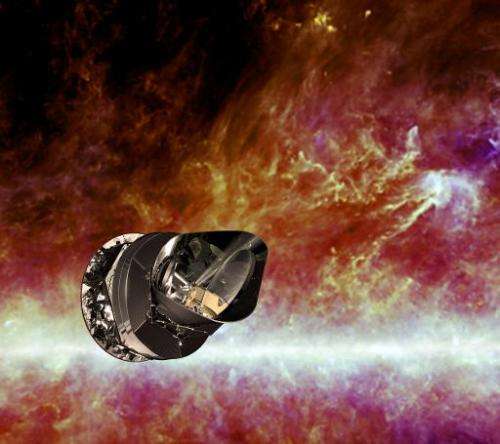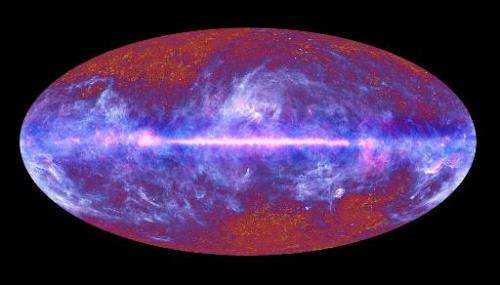Europe's Planck telescope retires

The deep-space Planck telescope was switched off Wednesday after a successful 4.5-year mission that revealed our Universe to be 80 million years older than previously thought, the European Space Agency said.
Mission controllers in Darmstadt, Germany, sent the final command to the satellite on Wednesday afternoon.
The satellite will now be "parked" in a safe orbit around the Sun, far away from the Earth and Moon, where it will stay for hundreds of years.
"Planck has provided us with more insight into the evolution of the Universe than any mission has before," Alvaro Gimenez, ESA director of science and robotic exploration, said in a statement.
The spacecraft has been preparing for permanent hibernation over the past few weeks, burning up all its fuel before the transmitter could be switched off.
The procedure to put Planck in a "permanently safe configuration" is similar to that employed for its sister satellite Herschel earlier this year.
Launched together in May 2009, Herschel was tasked with studying the origin of stars and galaxies while Planck looked at radiation remnants from the "Big Bang" that created the Universe some 14 billion years ago.
Named after the 20th-century German physicist Max Planck, founder of quantum theory, the satellite was equipped with a massive telescope to measure the temperature of Cosmic Microwave Background (CMB) emissions.
In March, ESA unveiled a 50-million pixel, all-sky snapshot of radiation left over from the Big Bang, compiled from data gathered by the orbiter.
The picture represented the Universe as it was at the age of about 380,000 years.
"Planck's picture of the CMB is the most accurate 'baby photo' of the Universe yet, but the wealth of data still being scrutinised by our cosmologists will provide us with even more details," said Gimenez.

The data showed the Universe to be expanding at a slower rate than previously thought, which required adjusting its age to 13.82 billion years.
To take its measurements, the 4.2-metre (13.7-foot) by 4.2-metre Planck satellite's detectors had to be cooled with liquid helium to near absolute zero (minus 273.15 degrees Celsius/minus 459.67 degrees Fahrenheit).
It was capable of measuring temperature variations of a few millionths of a degree.
Planck was designed to carry out two full sky surveys over a period of 15 months, but instead observed the sky for more than 30 months and completed five surveys using both its measuring instruments.
All science operations came to an end on October 3.
"It is with much sadness that we have carried out the final operations on the Planck spacecraft, but it is also a time to celebrate an extraordinarily successful mission," said Planck spacecraft operations manager Steve Foley.
Scientists will continue analysing the data obtained from Planck for some time to come.
"Planck has given us a fresh look at the matter that makes up our Universe and how it evolved, but we are still working hard to further constrain our understanding of how the Universe expanded from the infinitely small to the extraordinarily large, details which we hope to share next year," said project scientist Jan Tauber.
© 2013 AFP



















